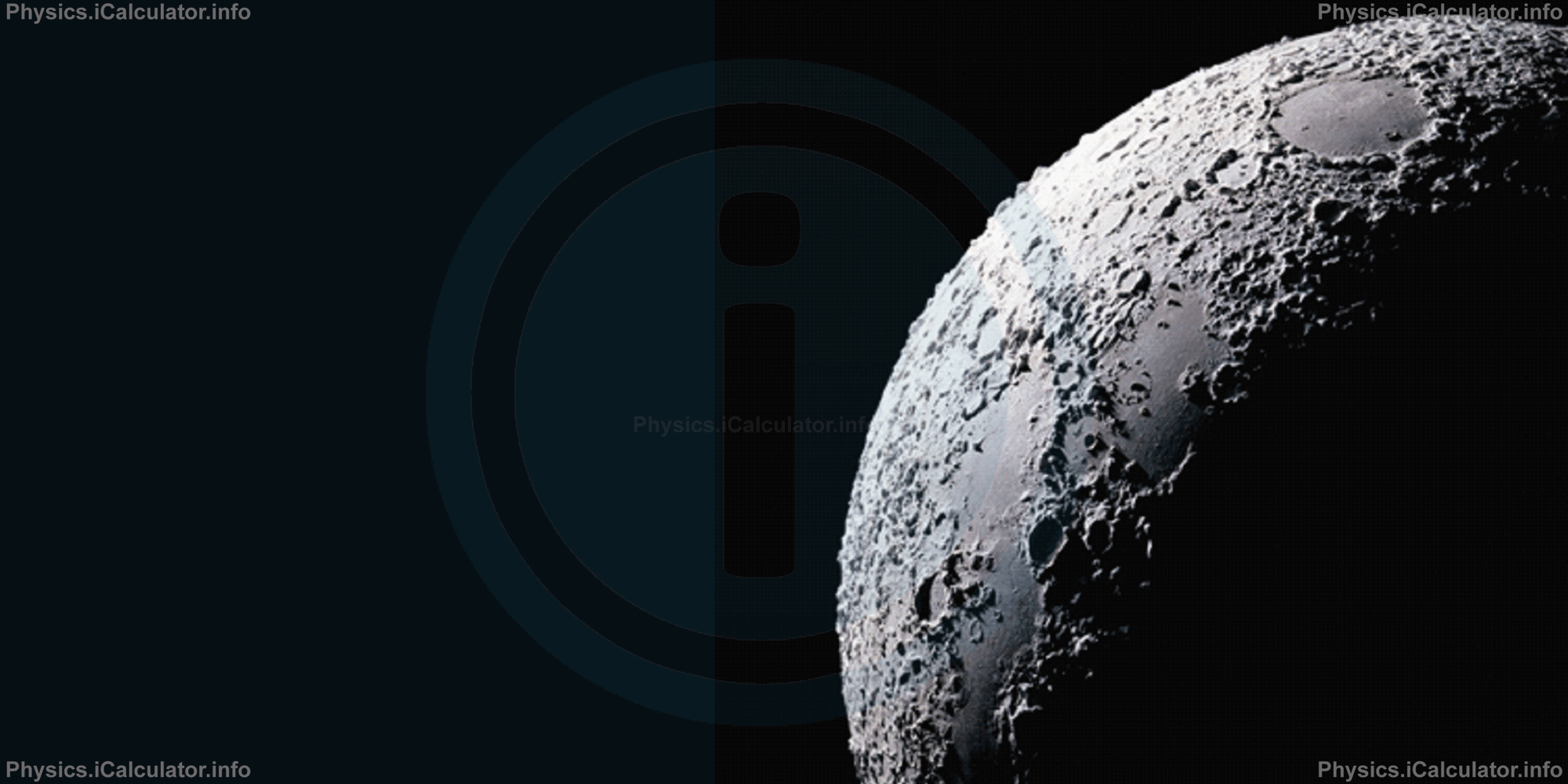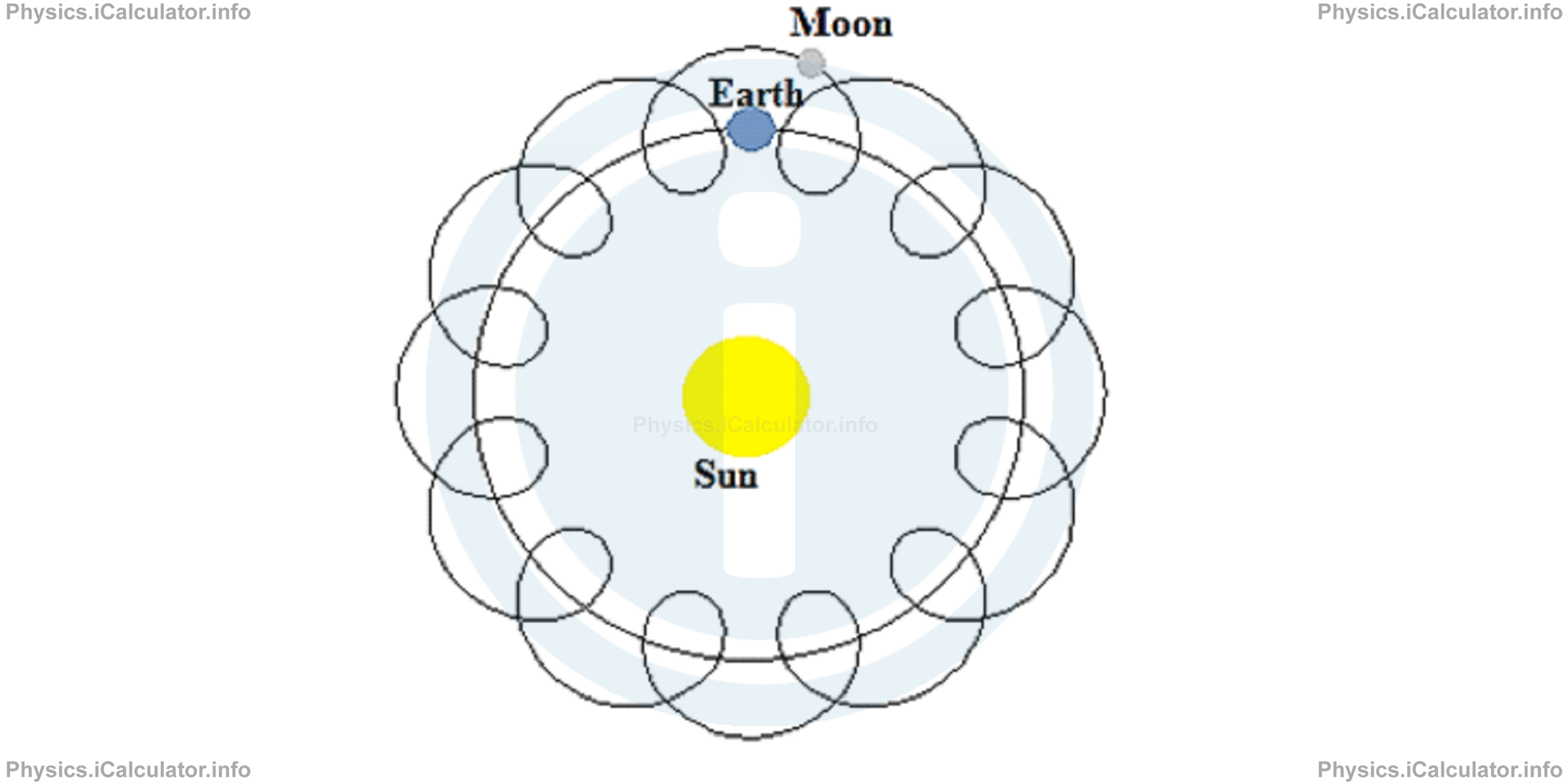Menu
Physics Tutorial 22.3 - The Moon's Movement. Eclipses. Calendars
Please provide a rating, it takes seconds and helps us to keep this resource free for all to use
There are 5 lessons in this physics tutorial covering The Moon's Movement. Eclipses. Calendars. The tutorial starts with an introduction to The Moon's Movement. Eclipses. Calendars and is then followed with a list of the separate lessons, the tutorial is designed to be read in order but you can skip to a specific lesson or return to recover a specific physics lesson as required to build your physics knowledge of The Moon's Movement. Eclipses. Calendars. you can access all the lessons from this tutorial below.
In this Physics tutorial, you will learn:
- How does the Moon move?
- What is tropical and synodic month? How do they differ from each other?
- What are the Moon phases? When do they occur?
- What are eclipses? How many eclipses are there?
- How calendars are designed? How many calendars are there?
- What factors are considered when designing a calendar?
- How to calculate the alignment period between two planets?
Introduction
It is a matter of fact that the Moon is the only natural satellite of Earth and its closest celestial body. It is a rocky celestial body with many craters on its surface formed by the strike from asteroids experienced in time. Moon was formed about 4.5 billion years ago, about 30-50 million years after the origin of the Solar System, out of debris thrown into orbit by a massive collision between a smaller proto-Earth and another planetoid, about the size of Mars.

Gravitational forces, like in all the other celestial bodies, are the main factors that determine the movement of Moon. However, unlike in planets where only the Sun is considered when dealing with gravitational forces, as the effect of other celestial bodies in this force is negligible, there are two different gravitational forces that determine the trajectory of Moon: the gravitational force exerted by the Sun and that exerted by Earth on the Moon. The sum of these two forces (net gravitational force) makes the Moon deflect too much from the pure circular (or elliptic if you want) motion (discussed in tutorial 8.2) as shown in the figure below. (Actually Earth makes the same kind of rotation around the centre of our galaxy when revolving around the Sun but for now, we are not interested on this).

Please select a specific "The Moon's Movement. Eclipses. Calendars" lesson from the table below, review the video tutorial, print the revision notes or use the practice question to improve your knowledge of this physics topic.
Whats next?
Enjoy the "The Moon's Movement. Eclipses. Calendars" physics tutorial? People who liked the "The Moon's Movement. Eclipses. Calendars" tutorial found the following resources useful:
- Physics tutorial Feedback. Helps other - Leave a rating for this tutorial (see below)
- Cosmology Revision Notes: The Moon's Movement. Eclipses. Calendars. Print the notes so you can revise the key points covered in the physics tutorial for The Moon's Movement. Eclipses. Calendars
- Cosmology Practice Questions: The Moon's Movement. Eclipses. Calendars. Test and improve your knowledge of The Moon's Movement. Eclipses. Calendars with example questins and answers
- Check your calculations for Cosmology questions with our excellent Cosmology calculators which contain full equations and calculations clearly displayed line by line. See the Cosmology Calculators by iCalculator™ below.
- Continuing learning cosmology - read our next physics tutorial: Stars
Help others Learning Physics just like you
Please provide a rating, it takes seconds and helps us to keep this resource free for all to use
Related Physics Calculators by iCalculator
- Apparent Magnitude Of Stars Calculator
- Cepheid Method Calculator
- Parallax Method Calculator
- Distance Of Planet From The Sun Calculator
- Galaxies Receding Speed Calculator
- Planets Realignement Time Calculator
- Stars Illumination Calculator
- Temperature Of Primordial Universe Calculator
Physics Calculators
You may also find the following Physics calculators useful.
- Convective Heat Transfer Calculator
- Relativistic Pressure Calculator
- Displacement Calculator
- Antenna Gain Calculator
- Vector Displacement Calculator
- G Force Calculator
- Bmep At Maximum Power Calculator
- Increase In Sound Power Level Calculator
- Kinematics Of Linear Shm Calculator
- Power Factor In A Rlc Circuit Calculator
- Newtons Second Law For A System Of Particles Calculator
- Mass And Impulse Calculator In Relativistic Events
- Energy Of Photon Calculator
- Cepheid Method Calculator
- Mean Effective Pressure Calculator
- Antenna Polarization Calculator
- Distance Covered By A Person In Upstream Downstream Calculator
- Deceleration Distance Calculator
- Lever Force Calculator
- Nuclear Decay Calculator